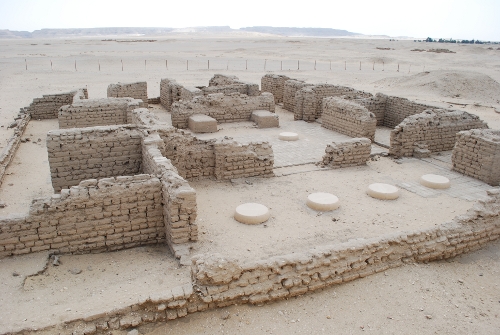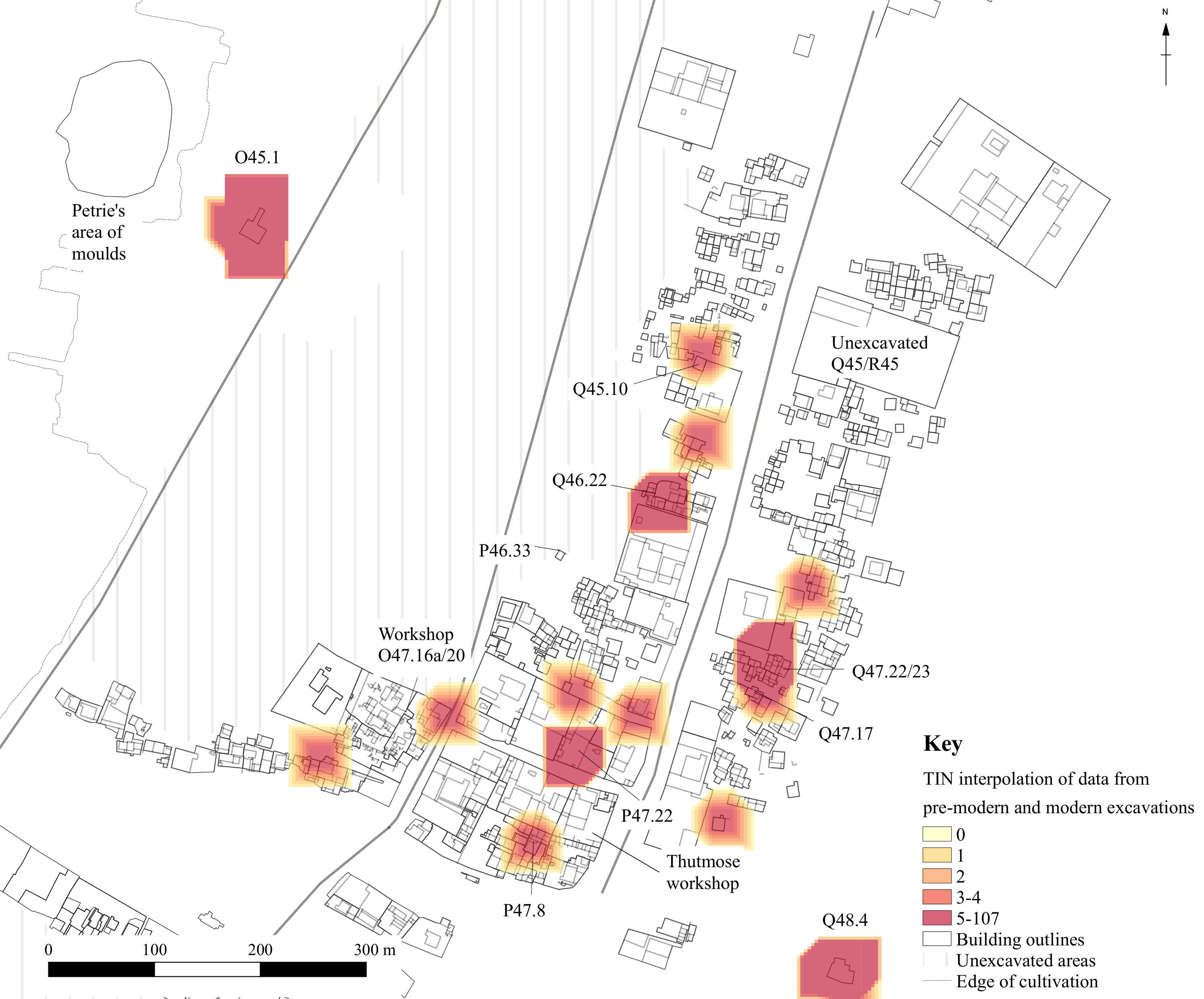

Craft Interactions in a New Kingdom Industrial Landscape (Egypt, 1550–1069 BCE) (2025-2028)
My current research project, Craft Interactions in a New Kingdom Industrial Landscape (Egypt, 1550-1069 BCE), is funded by the DFG and the AHRC and is carried out in partnership with my Co-PI, Dr. Frederik Rademakers at the British Museum Department of Scientific Research.This project charts for the first time the interaction between high-temperature technologies in New Kingdom Egypt (1550–1069 BCE), focussing on a pivotal time in history when industrial-scale glass production was developed alongside growing copper alloy, faience and pigment manufacture and these materials were conspicuously exchanged throughout the Mediterranean. Although these high-temperature industries have been examined individually to varying extent, this project proposes a paradigm shift is needed to fully understand them in light of each other. This project introduces an integrated methodology, reconsidering archaeological evidence as a reflection of wider production networks (réseaux opératoires) rather than individual material production chains (chaînes opératoires) to assess the extent of entanglement between different high-temperature technologies. As such, the project attempts to fundamentally change our understanding of ancient societies by explicitly examining the flow of materials and people between crafts in the past. This will be achieved through a novel implementation of state-of-the-art analytical methods contextualised by fresh excavation at Amarna (the Hayter-Sherraif Workshop) and guided by ground-breaking laboratory-based experimentation.

Amarna M50.14-16: Analysis and Publication (2020-2024)
In 2014 and 2017 I led an archaeological fieldwork project at Amarna in Middle Egypt, which encompassed the (re-) excavation of a domestic workshop at site M50.14-16 (see also here), a domestic workshop in the Main City South at Tell el-Amarna (Amarna: ancient Akhetaten in Middle Egypt, c. 1353–c. 1336 BC). The site is a unique example of an urban domestic workshop for the manufacture of vitreous materials at household level, forming a missing link in the urban network of industrial activities at Amarna. Site M50.14-16 was excavated cursorily in 1922 and remained largely undocumented, permitting only vague assumptions on its nature as a glass-processing centre. Recent work, directed by the applicant, yielded a substantial amount of detailed and well-documented archaeological data regarding the site, which encompasses a main, domestic building (M50.16) a secondary building (M50.15) and outside working areas (M50.14). In situ evidence of industrial activity was excavated, the most prominent industry being glass-working, including two glass ingots – in addition to faience manufacture, metal-working and agate processing. The findings may indicate that the site played an important role in the glass industries of Amarna, and, possibly, in the international exchange of glass during the Late Bronze Age. In order to find out more about how domestic glass-working took place at Amarna and the whereabouts of a possible kiln, an area of more than 500 square metres was excavated, and a large number of finds relating to glass-working, but also to the manufacture of faience, stone and metal, were found. Preliminary reports can be found here.
Between September 2020 and January 2025 I worked on the publication of the archaeology and the material excavated at M50.14-16: the project has succeeded in the documentation and contextualisation of the archaeological site. In order to reconstruct the historical development and role of the site, the archaeological archive was be reviewed. The study of the spatial distribution of objects through digital mapping has enabled the identification of activity zones. An inter-Egyptian and interdisciplinary comparison of the archaeological evidence of manufacture has delivered new information on Late Bronze Age socio-economic processes in an urban environment, in particular with regard to the chaîne opératoire of craft production and its organisation. The contextualization of the site within its direct environment has facilitated the understanding of M50.14-16 as an urban domestic workshop and the activities carried out by its occupants at the site and across Amarna.
This project, entitled Working in the Suburbs: the study of archaeological and material remains at domestic workshop site M50.14-16 at Amarna, was funded by the German Research Foundation (Deutsche Forschungsgemeinschaft, DFG) through a 3-year research grant and based at Freie Universität Berlin (Institut für Ägyptologie), in collaboration with the Amarna Project (University of Cambridge).
Click here for information about the book publication.
KOBALT: “Chaîne Opératoire” des beliebten blauen Farbstoffes im Neuen Reich Ägyptens (2017-2018)

In 2018 I completed a post-doctoral research fellowship at the excellence cluster TOPOI in Berlin. My project, KOBALT: “Chaîne opératoire” des beliebten blauen Farbstoffes im Neuen Reich Ägyptens was concerned with cobalt ore and its processing and use in New Kingdom Egypt, particularly at the site of Amarna:
The project combined archaeological and archaeometrical methods, in order to examine the variations in the chemical fingerprint expressed by the various cobalt sources and to test their homogeneity across Amarna. The results shed light on trade and control networks of cobalt ore, and interactions within and between individual workshops. Non-destructive chemical and optical analysis, partially using fixed laboratory equipment, but also portable devices, were used to gather data for the large quantities of archaeological material from earlier and recent excavations, including site M50.14-16. In addition, the artefactual and chemical data was be mapped and analysed, using a database and Geographical Information Systems (GIS) in order to determine distribution and control patterns of Late Bronze Age (LBA) Egyptian glass-working as well as socio-economic processes in an urban environment, in particular with regard to the chaîne opératoire of craft production and its organisation.
A portable X-ray fluorescence (XRF) machine was brought to the site in 2018, which enabled me to analyse the objects without removing or destroying them. The Egypt Exploration Society generously funded a pilot project in 2015, which tested the suitability of such equipment for the analysis of Late Bronze Age plantash lime-soda glasses. A report on this work can be read in Egyptian Archaeology 48. The results of the 2018 on-site analysis are available here, and a comparative study using LA-ICP-MS on material from the Egyptian Museum in Berlin can be found here.
Glass, Faience and Food in Late Bronze Age Societies (2015-2017)
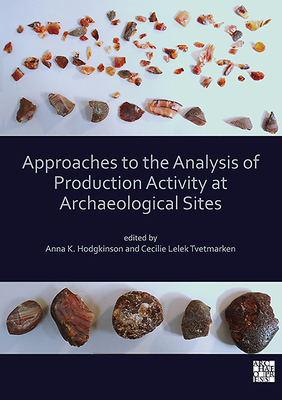
Between October 2015 and September 2017 I held a Marie Skłodowska-Curie post-doctoral fellowship based at the Freie Universität Berlin and the research cluster TOPOI, in partnership with the Egyptian Museum and Papyrus Collection in Berlin and the Amarna Project. My research project was entitled Glass, Faience and Food in Late Bronze Age Societies: An Analysis of the Socio-Economics of Urban Industries in Egyptian and Mesopotamian settlements.
I organised an interdisciplinary workshop on Approaches in the Analysis of Production at Archaeological Sites, which took place in Berlin on 20-21 January 2018. The workshop was the final deliverable of my Marie-Curie project. A keynote lecture was delivered by Prof. Cathy Costin on the subject of "Locating Craft Production: Space and Place". You can downlod or purchase the proceedings here.
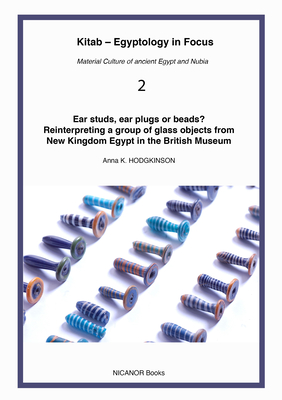
Working on Glass Jewellery at the British Museum (2014)
In early 2014 I carried out a three-month postdoctoral fellowship at the British Museum Department of Ancient Egypt and Sudan, researching items of glass jewellery from New Kingdom Egypt, their manufacture and use. The idea for this research was built upon my interest in Late Bronze Age glasses and their manufacture, which developed during my PhD. I focussed on a group of objects, the so-called "ear studs" or "ear plugs" from glass frequently found at New Kingdom settlement sites, which I reinterpreted to be beads or amulets, rather than items of ear jewellery. The results of this research are available in the form of a short monograph, published by Nicanor Books.
My PhD Research (2008-2014)
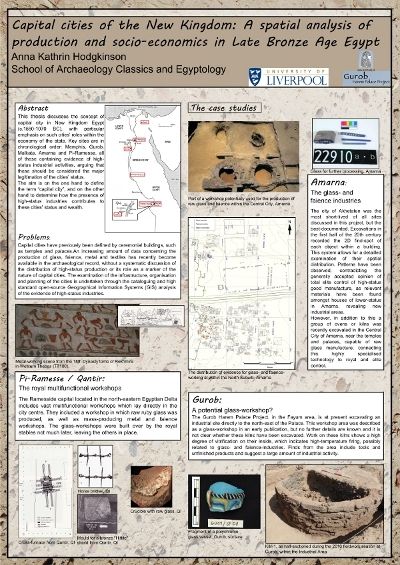
My PhD thesis (University of Liverpool School of Archaeology, Classics and Egyptology 2014), entitled Royal cities of the New Kingdom: a spatial analysis of production and socio-economics in Late Bronze Age Egypt was published as a monograph in late 2017, Technology and Urbanism in Late Bronze Age Egypt. The book discusses the production and consumption of luxury goods within the Royal cities of New Kingdom Egypt (c.1550-1070 BC), with particular emphasis on such cities' roles within the economy of the state. The sites discussed are Amarna, Gurob and Malqata, while Qantir/Pi-Ramesse features for comparison. All of these settlements contain evidence of high-status industrial activities, and thus it can be argued that this contributes to the legitimation of the cities' status. The book can be ordered here.
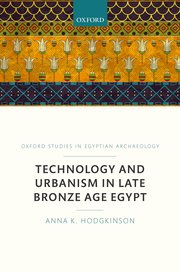
In order to establish how products and raw materials were controlled and distributed I produced and queried GIS maps, initially for well-preserved, relatively well-documented, almost purely single-period site of Amarna, but I have also been able to do the same for Gurob. During the course of this experiment I have been able to observed spatial clusters within the distribution of the archaeological evidence of production and also of finished objects. I have been able to isolate and interpret areas of concentrated industrial activity, emphasizing the fact that control over high-status industries was less tight than previously assumed.
